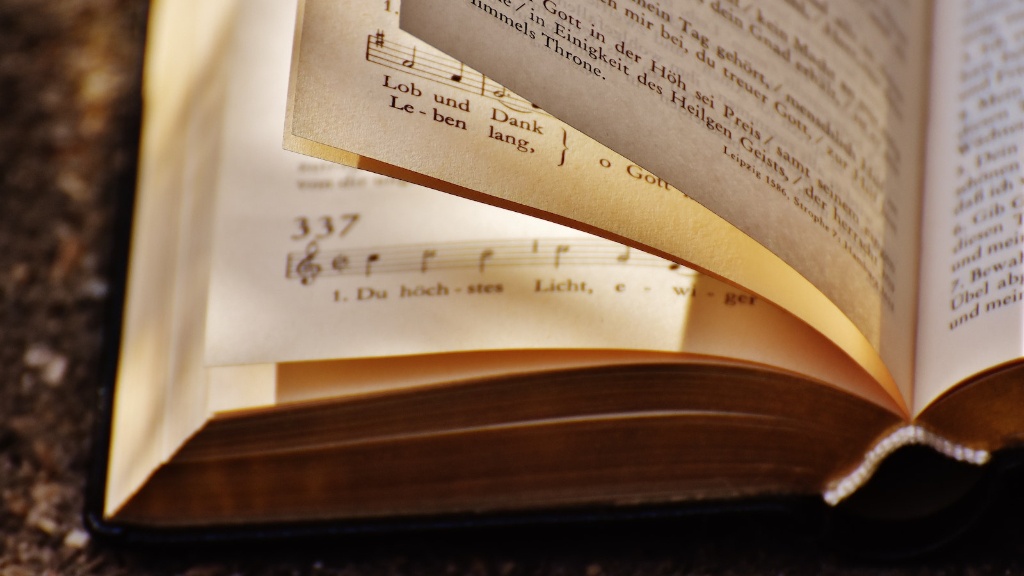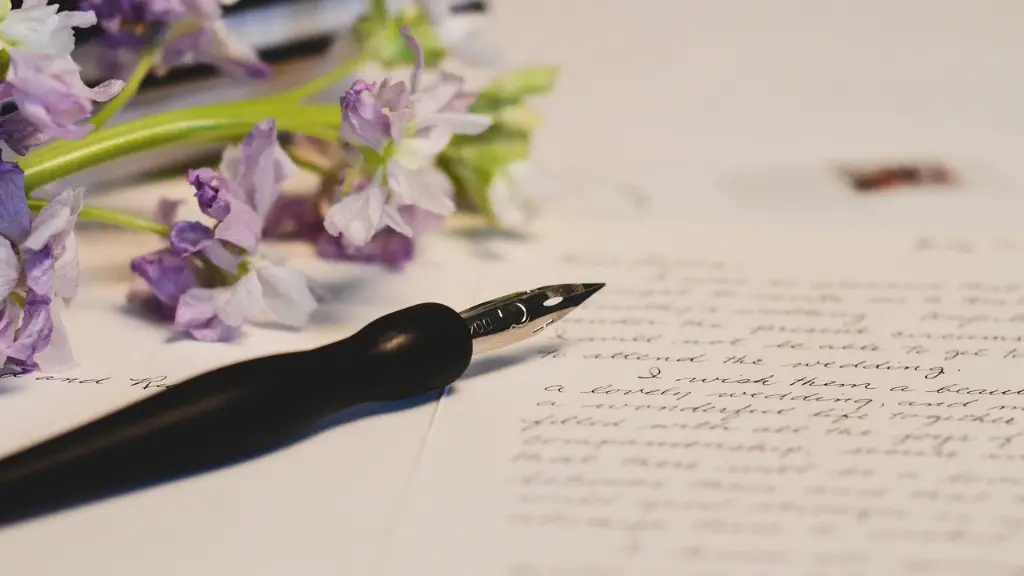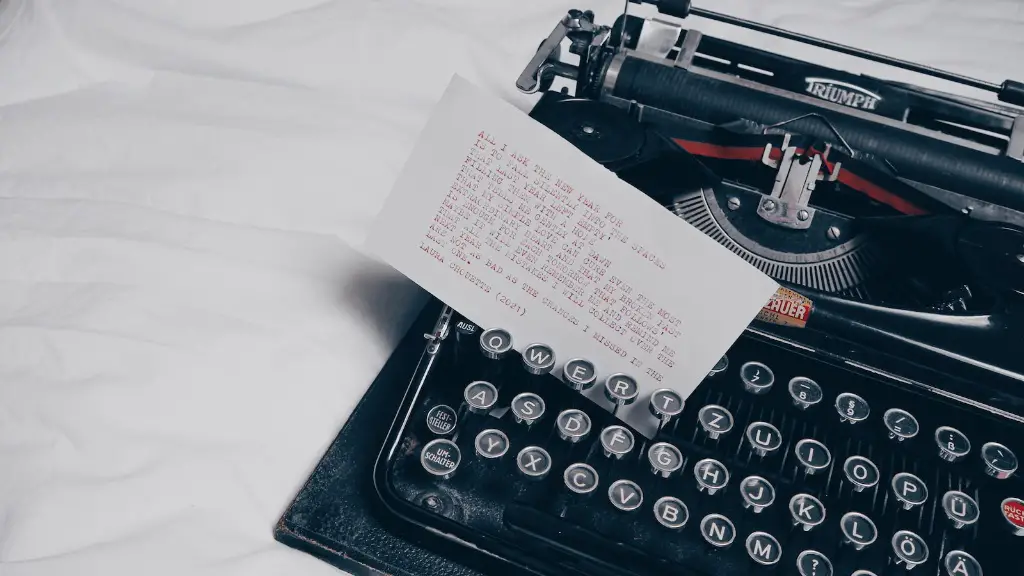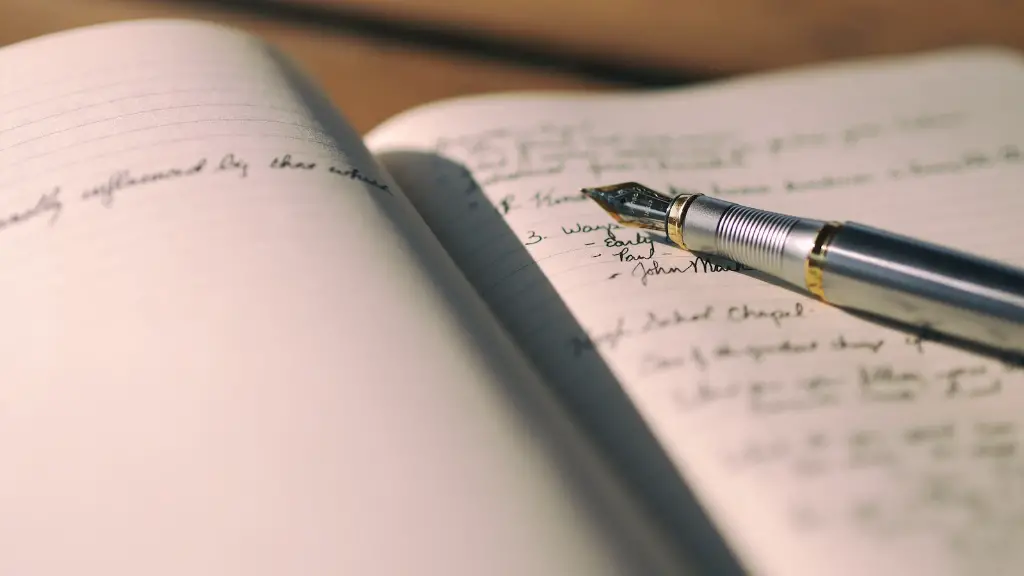Coming Up With a Thematic Title
Choosing a title for a poetry book can be a daunting task, but one of the best ways to start is to come up with a theme. A theme unifies the collection and gives you something to work with as you come up with a title. Consider the overall mood or feeling that the poems evoke and come up with a title or phrase that sums it up. It could be something metaphorical or figurative, a phrase or pun that alludes to the poems, or a quote or line from one of the poems. Once you’ve come up with a title that captures the essence of the work, consider how you might tweak it to make it more interesting or unique. A subtle play on words can draw attention and make the title memorable.
If you’re having a hard time coming up with a title, consider looking at other titles for inspiration. Look at titles of books published in the same genre or by poets of the same era for ideas on how to capture the mood of your book succinctly. Even books from more recent authors can be studied for techniques like alliteration, assonance, puns, and other rhetorical devices that make for titles that stand out. It’s important to be aware of titles that have already been taken, so try to ensure that your title is unique and doesn’t overlap with existing titles.
Adding Titles or Headings to Poems
Many poets include titles within the text of their works, and this can provide a useful starting point when coming up with a title for the collection. Consider which titles stand out or reflect the theme in some way, or which titles fit together well when paired with other titles. Or, consider creating a title with words or phrases drawn from each of the individual poem titles. You can also combine two or more of the poem titles to create a title for the collection. This allows you to combine some of the best individual titles and create a longer title without making it too cumbersome.
If you don’t have titles for your individual poems, you can still come up with a title for the collection by taking elements from the poems and combining them in an interesting way. Look for meaningful images or phrases that appear multiple times in the poem and draw from those to create a longer title. It could be a peculiar combination of words from a few different sections or a phrase that is repeated several times. Either way, try to capture the essence of the poems without making the title too long or convoluted.
Using Metaphors and Symbolism in Titles
Metaphors and symbols are a great way to evoke the meaning of a poem while also capturing the reader’s attention with an interesting title. Consider the overall tone of the book and the individual poems and come up with a metaphor or symbol that can represent the work as a whole. It could be something that’s directly addressed in the poems or simply an image or idea that captures the mood. This can be a subtle way to hint at the content of the collection or to draw out a deeper meaning without being too specific. Alternatively, you could go in a different direction and be more overt in your symbolism. If you have a strong title image, you can go into greater detail and use multiple symbols at once to give the reader a more comprehensive understanding of the work.
Drawing Inspiration From the Poems
Another way to come up with a title for a poetry book is to look for a line or phrase from one of the poems that sums up the work. This could be a line from the opening poem, from a pivotal poem in the collection, or from any other poem that stands out. Alternatively, you could draw from several different lines to create a longer title. This is a great way to sum up the book– not just in terms of what the poems are about, but also in terms of the overall feeling or atmosphere created by the poem.
Using Language to Draw the Reader In
When coming up with a title, it is important to consider language and the power of words. Look for language that can be evocative and draw the reader in. A poetic title with interesting words can be eye-catching and compel people to pick up the book and read it. Apart from using words that are engaging and vivid, deliberate word choice can also convey a deeper meaning without needing to provide an explanation. Consider what words can do to draw upon the emotional core of the poems and capture the attention of potential readers.
Creating an Allusion to Bigger Ideas
Consider creating an allusion to a greater or universal idea that the poems are exploring. This might be something mysterious, like a riddle, or something more direct, like a reference to a literary work or historical event. It could be an idea or an image that connects the poems to the wider world, or to something that is more abstract or metaphorical. An allusion can lead the reader on a journey that goes beyond the physical pages, and going for something ambiguous can leave the reader guessing and create intrigue.
Using an Unusual Word as a Title
Using an unusual word or phrase as a title can create interest and draw attention to the collection. If you don’t have an idea for a clever title, consider using an obscure word, a mix of two words, or a word that is particular to a certain neighbourhood or language. It can also be interesting to combine two words or phrases that don’t necessarily go together, which can create a unique title that stands out and can be memorable.
Including a Subtitle
If you’re struggling to come up with a title, consider adding a subtitle. The subtitle can provide additional context and elaboration on the title, or serve as a way to tie together a few different titles or phrases. A subtitle can also be clever and provide an additional level of intrigue or meaning. It can be a pun or a reference to a classic work, or a cryptic phrase that hints at the content of the poems without giving away the whole story.
Honoring the Title of Individual Poems
If you have particularly compelling titles for a few of the individual poems, you can draw from those to create a title for the collection. You could combine a few of them or use one as the title for the collection. If you decide to go this route, consider what poems have the most impact and choose titles that convey the ideas or images associated with the author’s vision. You can also draw from titles of individual sections within the collection to create a larger title.
Adding Additional Meaning to the Title with Punctuation
Punctuation can serve many purposes when titling a book of poetry. It can add emphasis, create intonation or rhythms, and emphasize particular words in a title. It can also be used to add an additional layer of meaning and provide additional context. Consider adding ellipses, dashes, or parentheses to the title to change up the way it reads and add an additional layer of meaning.
Making the Title Unique
It’s important to make sure that the title is specific and unique to the book. This can be done by adding personal elements, such as the author’s name or preferences, or by creating an original title. Consider adding special touches to the title so that it stands out from the crowd and is memorable. For example, you could include a special character or an old-fashioned font to create a title that is eye-catching and stands out from other titles.



